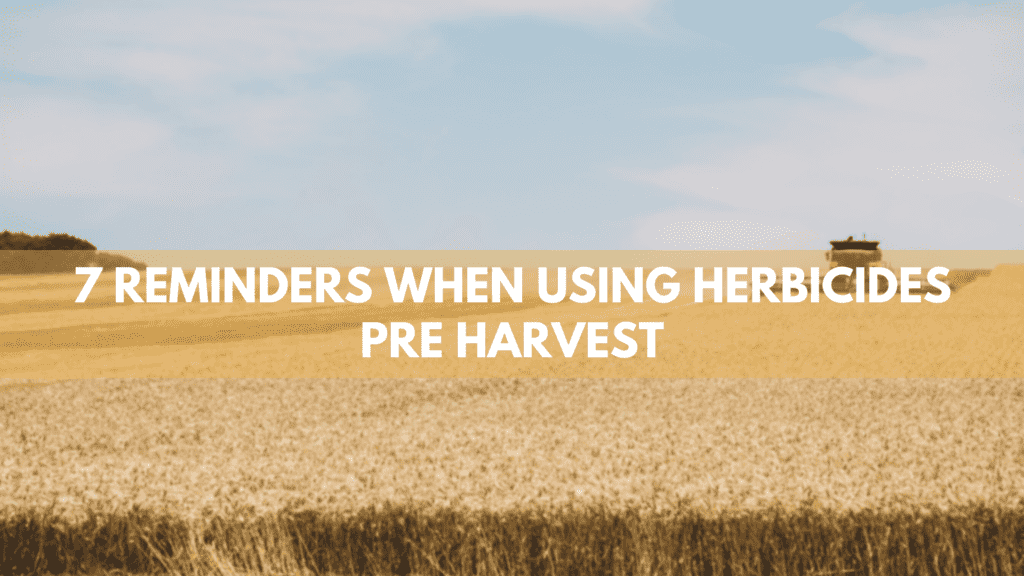It’s getting to that time of year, so here’s a little refresher for you about desiccation crop topping.
- Use A Registered Product And Rate:

- Ryegrass:
If ryegrass is a problem in your paddock, spray topping is an excellent tool. It allows you to have an early crack, reducing seed set in mature weeds. Plus, it enables you to get on top of any early summer weeds or smaller weeds that are germinating. P.S. Even if the timing is a bit late, you will still be stopping a high percentage of seeds from forming. - Hit The Right Balance:
Applications at the correct stage of development can reduce more than 90% of seed set in annual ryegrass. But you need to balance this out with potential crop yield loss. And getting it right can be tricky. The physiological difference between crops and weeds is not always as wide as required, and yield losses can occur. Remember that if the grain is going to be used as seed, crop topping before physical maturity can cause the grain to be less viable. Check with our agro’s if you need a hand determining timing. - Resistance Issues:
Make sure you have a good idea of any resistance issues you might have with your paddock. Resistance will limit the effectiveness of the herbicide group you are using. Also, keep in mind what you’ll be putting in next year and using as pre-ems/knockdowns so you can rotate actives accordingly. - Evening Up Canola:
Desiccation is excellent for ensuring your canola goes off evenly and making work easier. That way, when it comes to harvest, you aren’t combating a mixture of mature seeds and seeds that are still green and not ready to harvest. If you apply product at the correct time, desiccating will have no detrimental effects on the seed or its oil quality. Currently, there are only three glyphosate options registered for use in canola. These are Crucial, Weedmaster DST and Roundup Ultra Max. These are registered for use before direct heading or before/under the windrow, with Nufarm’s Crucial having a withholding period of five days. The ideal timing for glyphosate products is to apply to mature standing crops with a 20% seed colour change to dark brown or black. Higher label rates can be used when crops or weeds are dense. Just remember – do not apply glyphosate if you intend to keep the seed. Also, Faba Beans can be desiccated when the hilum on the seed turns dark brown-black, as the seed is at full physiological maturity at this stage. To ensure no yield is lost, ensure the pods at the top of the plant are at this stage, as pods will ripen from the bottom up. - Note The Restrictions:
Remember that paraquat/diquat mix products (i.e. SpraySeed) are NOT registered for pre-harvest use in ANY crop.
When applying Sharpen to Lentils, DO NOT retain seed for the following season, as some reduction to vigour is possible.
As you know, registered glyphosates can be applied to feed barley, but NOT on malt barley, as it won’t be accepted if glyphosate has been applied late to the crop. - Adhere To Labels And WHPs:
As always, make sure you consult labels and permits for harvest withholdings with all herbicide usage. Grain handlers and marketers regularly conduct surveillance tests to ensure grain is within Maximum Residue Limits (MRLs). So make sure you comply with registered labels. Also, if keeping seed for next year’s sowing, be cautious with late-season herbicides.
P.S.
Check out Nufarm’s Crucial this season for your croptopping and desiccation needs, also includes hay/silage.
As always, come in and see us for more information on what tactics will work best on your specific case.

